2014-03-06
With one stomp of his foot, Zhong Lin Wang illuminates a thousand LED bulbs – with no batteries or power cord. The current comes from essentially the same source as that tiny spark that jumps from a fingertip to a doorknob when you walk across carpet on a cold, dry day. Wang and his research team have learned to harvest this power and put it to work.
Continue reading →
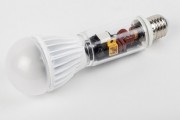 2014-03-06
2014-03-06
Coping with higher temperatures LEDs do have one weakness, though – they are extremely sensitive to variations and spikes in power. To function properly, they need a driver that ensures a constant supply of power at all times. This driver, which takes the alternating current from the grid and converts it into direct current with a reduced voltage, has a profound influence on the light yield and lifetime of the LED lamp as a whole. The demands placed on the driver electronics are correspondingly high. This has prompted researchers at the Fraunhofer Institute for Appli...
Continue reading →
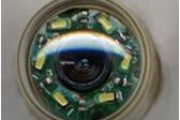 2014-02-28
2014-02-28
It was 1950 when Mr. Hopkins met Dr. Hugh Gainsborough, a gatroentreroligst at St. George’s Hospital London, where he was put forth with a challenge of illumination while operating within abdomen. By 1954, Hopkins invented flexible glass rods which transmitted light from external light source to the inspecting tissue residing within the body of patient, which came to be known as rod lens system. Concurrently early 1950 saw the birth of fibre optic light transmitting system which revolutionized the field of communication.
Continue reading →
 2014-02-25
2014-02-25
Scientists at the U.S. Naval Research Laboratory (NRL) have suggested a method that could significantly increase the efficiency of green-blue-ultraviolet light-emitting diodes based on GaInN/GaN, AlGaN/GaN, and AlInN/GaN quantum wells. Their approach could enable advances in solid state lighting and the creation of low threshold lasers and high power light LEDs. Their research is published in the January 25 and November 26, 2013 issues of Applied Physics.
Continue reading →
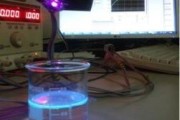 2014-02-19
2014-02-19
Researchers at Technical University of Madrid (UPM) are working in the development of hydrocarbons early detection devices for rivers in order to prevent contamination that could seriously affect the environment.
Continue reading →
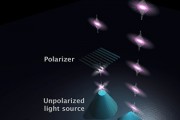 2014-02-18
2014-02-18
By emitting photons from a quantum dot at the top of a micropyramid, researchers at Linköping University are creating a polarized light source for such things as energy-saving computer screens and wiretap-proof communications.
Continue reading →
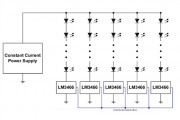 2014-02-07
2014-02-07
Joe DeNicholas, Product Line Manager, Lighting Power Products, Texas Instruments (TI) tackles some common issues in Multi-string LED lighting systems in this blog entry.
Continue reading →
2014-02-03
Research by Gaël Reecht, Fabrice Scheurer, Virginie Speisser and et al from University of Strasbourg, France luminescence can be achieved by a single polymer molecule, which could be the smallest possible OLED device, according to Physic Review article. Below is the synopsis for the report on Physical Review Letters by Don Monroe :
Continue reading →
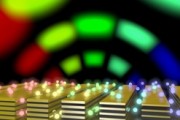 2014-01-27
2014-01-27
University of California, San Diego electrical engineering professor Zhaowei Liu and colleagues have taken the first steps in a project to develop fast-blinking LED systems for underwater optical communications.
Continue reading →
2014-01-10
When evaluating the working stresses of a semiconductor device, such as an LED, the output current from the power supply or the current delivered to the circuit board, LED string and LED package are of little consequence without associating these values to the device ratings. With respect to power, the electrical metric that is most closely associated with LED performance and lifetime is current density. Performance metrics such as efficacy, lumen maintenance and color point stability depend largely upon the designed current level (or current density) of the LED, which may be related to the physical size of the LED die or electrical arrangement of multiple die within an LED package.
Continue reading →
 2013-12-30
2013-12-30
In this white paper, Robert Davis, Director, Product Innovation & Marketing at LiteControl provides some insights on how lighting designs are perceived by the brain. Davis, who holds a PhD, is a Fellow of the Illuminating Engineering Society.
Continue reading →
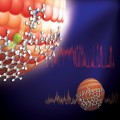 2013-12-18
2013-12-18
In a study just published in the journal Chemical Communications, scientists at the U.S. Department of Energy’s Brookhaven National Laboratory, Stony Brook University, and Syracuse University show that shrinking the core of a quantum dot can enhance the ability of a surrounding polymer to extract electric charges generated in the dot by the absorption of light.
Continue reading →
 2013-12-12
2013-12-12
PhD. Bhardwaj Jyoti, Senior Vice President, R&D, Philips Lumileds gives detailed information about the development of chip scale package technology in this article. Chip scale packages are novel to the LED industry but they are the mainstay of the semiconductor industry. Development of CSP in the Si ICs was driven by miniaturization, improved thermals, higher reliability, and simply the need to connect to an ever increasing pin-count on an ever shrinking die. Chip Scale packages also enabled a reduction in device parasitic and allowed for ease of integration into Level 2 packaging. It is therefore a natural evolution for such packaging innovation to proliferate into other industries including the LED product space and therefore not surprising that Chip-scale packaging has made inroads into the LED industry as recently released by Philips Lumileds.
Continue reading →
2013-07-09
Quality of LED bulbs on the market varies greatly, the unqualified LED bulbs ordinary consumers bought will be easily broken and lack luster over time, in order to purchase qualified products, consumers must check the certification logo at first.
Essential Safety Certification
Xiaoming Ai, CEO of OSRAM (China) Lighting Co., Ltd., said that consumers must choose the LED products in line with national standards and coming with safety certification, such as CCC, GS, CE, and UL. "These products provide powerful guaranty of safety, performance and d...
Continue reading →
2013-07-01
Earlier, the Smart Lighting Engineering Research Center of Rensselaer Polytechnic Institute wisdom Lighting Engineering Research Center announced that it has succeeded in integrating the LED and power transistors on the same gallium nitride (GaN) chip. The researchers said that this innovation opens the door to a new generation of LED technology, because it is cheaper to manufacture, more efficient, and the new features and applications are far beyond the lighting category.
Currently, the core of LED lighting system is LED chips making from gallium nitride, bu...
Continue reading →
2013-06-28
Europium (Eu) doped nitride semiconductors make it possible to create novel optical devices, such as a low threshold lasers and single photon emitters. However, not all europium ions are incorporated in semiconductor optical active site that can be excited through the GaN host. Therefore, it is important to develop methods to selectively incorporate europium ions in higher-efficiency optical sites. Hiroto Sekiguchi and his colleagues at Toyohashi University of Technology and Hamamatsu Photonics Ltd have improved the emission intensity from europium ions by magnesium co-dop...
Continue reading →
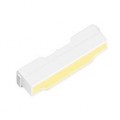 2013-06-19
2013-06-19
Even at high temperatures and high currents the MicroSideled 3806 from Osram Opto Semiconductors ensures stable light conditions on the display. The brightness of this light emitting diode, which is available in white and blue, remains constant throughout its lifetime, and the color rendering leaves nothing to be desired. They also offer particularly impressive efficiency so these semiconductor light sources are ideal for portable devices such as tablets and smartphones. Thanks to its excellent efficiency, the MicroSideled from Osram Opto Semiconductors is the ideal energy...
Continue reading →
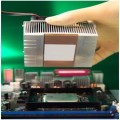 2013-06-18
2013-06-18
Source: Courtesy of Dow Corning As electronics designers and manufacturers continue to move toward smaller, faster and higher performing devices, the challenge of thermal management is steadily mounting. Less board space and increased operating frequencies are raising temperatures, and risking reduced device performance and reliability over time. To help electronics designers and manufacturers address these thermal challenges, Dow Corning is introducing two advanced new products to its proven line of Thermal Interface Materials (TIMs): Dow Corning® T...
Continue reading →
2013-04-01
Obvious energy saving effectiveness, long lifetime, no radiation, no RF interference, no white noise, soft light rays, and a wide operating voltage range are all special features of LED lighting, and becoming well received daily. As a consumer, how are you able to pick the best product to satisfy your needs with a wide range of LED lights spread out before you? First is through packaging and trademark. LED lighting products are forced by the country to include the following information on the outside packaging label: voltage rating, voltage range,......
Continue reading →
 2013-03-22
2013-03-22
Author: Steven Chen, Process Control Solutions Technologist, KLA-Tencor Corporation Introduction LED manufacturing is undergoing a tremendous transformation. The evolution to high brightness LED, larger wafer size and new complex architectures make LED manufacturing more challenging than ever before. Even though these trends greatly benefit the advancement of the LED industry in terms of LED efficiency and performance, they can also potentially negatively impact yield. In order for LED manufacturers to stay competitive in this dynamic environment, they need to have a comprehensive in-line process control strategy to improve the yield to make the solution cost effective. Currently, most LED manufacturers rely on inspection tools to inspect and provide defects of interest (DOI). Defect density is typically utilized as the gauge for statistical process control (SPC) control. However, the drawback of this approach is the fact that there can potentially be a lot of nuisance defect that does not cause yield loss. In looking at a defective wafer through an inspection tool, how do you determine which defects are killer defects that impact the yield or electrical performance, and which defects are nuisance? How can killer defects be detected at the earliest possible time to prevent costly excursions? These are the questions that must be addressed properly.
Continue reading →
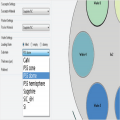 2013-03-20
2013-03-20
In the next years, the use of PSS will further increase due to its high light extraction efficiency. Following this trend, LayTec‘s in-situ metrology software EpiNet 2 can be individually customized for various kinds of PSS. Our users can expand the substrate database by themselves. LayTec‘s Calibration Manual explains how to measure PSS reflectance in different pockets in one single calibration run. If required, LayTec also offers related customer trainings. Once the initial reflectance values of the PSS substrates are uploaded, the operator can choose the needed substrate in the RunType‘s Material Spec window (Fig. 1). As a result, all PSS wafers can be monitored with the same accuracy as standard sapphire substrates.
Continue reading →
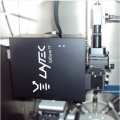 2013-03-20
2013-03-20
A major challenge of in-situ metrology on single-port reactors with small viewport geometries is the combination of curvature measurements by a blue laser with reflectance measurement at 405 nm. The blue laser is a must for patterned sapphire substrates (PSS) and double-side polished substrates. The 405 nm reflectance is indispensable for monitoring of InGaN MQW growth. Until now, it was impossible to have both features for reactors with only one small optical access because of the cross-talk effect. The new optical and electronic design of EpiCurve® TT eliminates this problem.
Continue reading →
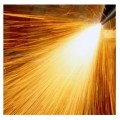 2013-02-22
2013-02-22
The aim is to increase the performance and lower the costs of laser systems for material processing As part of the ‘Integrated Microphotonics’ initiative, Osram Opto Semiconductors is coordinating the IMOTHEB project (Integrated microoptical and microthermal elements for diode lasers of high brilliance). The aim is to improve the performance of laser systems and at the same time reduce production costs. The project partners are DILAS Diode Laser and the Max Born Institute. The project (FKZ 13N12312) runs from October 1, 2012 to September 30, 2...
Continue reading →
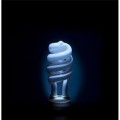 2013-01-22
2013-01-22
CFL bulbs contain mercury and when they break in your home a tiny amount of mercury will be released and become a more or less permanent part of your environment. Here’s a little taste of what Health Canada has to say about the dangers of mercury: If mercury is burned, heated, sprinkled or spilled in the home, a poisonous gas can be produced, requiring a clean-up procedure. Your first instinct when you break one of those coiled CFL light bulbs will be to get out the vacuum cleaner. Don’t. Here’s what Health Canada suggests: The amount of mercury found...
Continue reading →
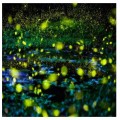 2013-01-11
2013-01-11
Fireflies have been the source of inspiration for scientists and research groups working on developing better lighting devices for a sustainable future.
Using this technology alone, a team of researchers at Syracuse University debuted zero-energy lights. Now an international team of scientists are using nature’s technology to develop LED light bulbs which produce more luminescence using the same amount of energy.
In all types of fireflies, the bioluminescence is emitted through the cuticle of their exoskeleton, however, a part of the luminescence is reflected back...
Continue reading →
 2012-12-18
2012-12-18
Industry’s first fully integrated LED drivers in industry-standard IC packages helps developers skirt design complexities Texas Instruments Incorporated (TI) (NASDAQ: TXN) introduced two fully integrated LED driver micro-modules that eliminate the external components and complex layout placement challenges typical of LED driver designs. The 450-mA TPS92550 and TPS92551 DC/DC LED driver modules are the industry’s first to incorporate all the required power and passive circuitry into a single IC package to deliver up to 23W of power to...
Continue reading →
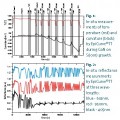 2012-12-14
2012-12-14
The challenges of GaN growth on Si(111), especially for LED growth, are well known and meanwhile controllable. Cooldown-assisted layer cracking as a result of high tensile stress can be prevented and crystal quality can be enhanced by sophisticated interlayers. Numerous institutions worldwide are already using LayTec‘s EpiCurve TT with advanced curvature resolution for high quality GaN devices on large scale Silicon substrates. Now, this experience is being transferred to growth on Si(001) and Si(110), because GaN based power electronics can be easily in...
Continue reading →
 2012-12-06
2012-12-06
Earlier this week, news emerged from the US that researchers have developed a new type of lighting that could replace fluorescent bulbs. The new source is reportedly more efficient, produces a better quality of light and is flicker free. Whilst the concept of light from polymers is certainly intriguing, I was somewhat taken aback by the attention the story received. After all, we already have viable alternatives for the fluorescent tube that does all of the above. So why are we under the impression that we don’t? To understand the context we need to look back. The UK ...
Continue reading →
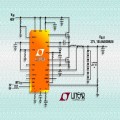 2012-10-26
2012-10-26
Linear Technology announces the LT3763, a synchronous buck LED driver controller that delivers over 300W of LED power. Its 6V to 60V input voltage range makes it ideal for a wide variety of applications, including automotive, industrial and architectural lighting. Similarly, its output voltage can be set from 0V to 55V, enabling it to drive a wide range of LEDs in a single string. The LT3763 offers both input and output current monitors and limiting, which accurately control both input and output current. Similarly, the LT3763 also offers accurate output voltage reg...
Continue reading →
2012-10-25
Merck and Seiko Epson Corporation today announced a cooperation and licensing agreement for inkjet inks used in the manufacture of organic light-emitting diode (OLED) displays. According to the agreement, Epson will supply Merck with ink technology that dissolves Merck’s OLED materials so that they can be used for the production of printable displays used in OLED television screens. Financial terms of the business agreement were not disclosed. The use of inkjet technology for printing OLED displays requires a combination of long-lasting OLED materials a...
Continue reading →
 2014-03-06
2014-03-06
 2014-02-28
2014-02-28
 2014-02-25
2014-02-25
 2014-02-18
2014-02-18
 2014-02-07
2014-02-07
 2014-01-27
2014-01-27
 2013-12-30
2013-12-30
 2013-12-18
2013-12-18
 2013-12-12
2013-12-12
 2013-06-19
2013-06-19
 2013-06-18
2013-06-18
 2013-03-22
2013-03-22
 2013-03-20
2013-03-20
 2013-03-20
2013-03-20
 2013-02-22
2013-02-22
 2013-01-22
2013-01-22
 2013-01-11
2013-01-11
 2012-12-18
2012-12-18
 2012-12-14
2012-12-14
 2012-12-06
2012-12-06
 2012-10-26
2012-10-26